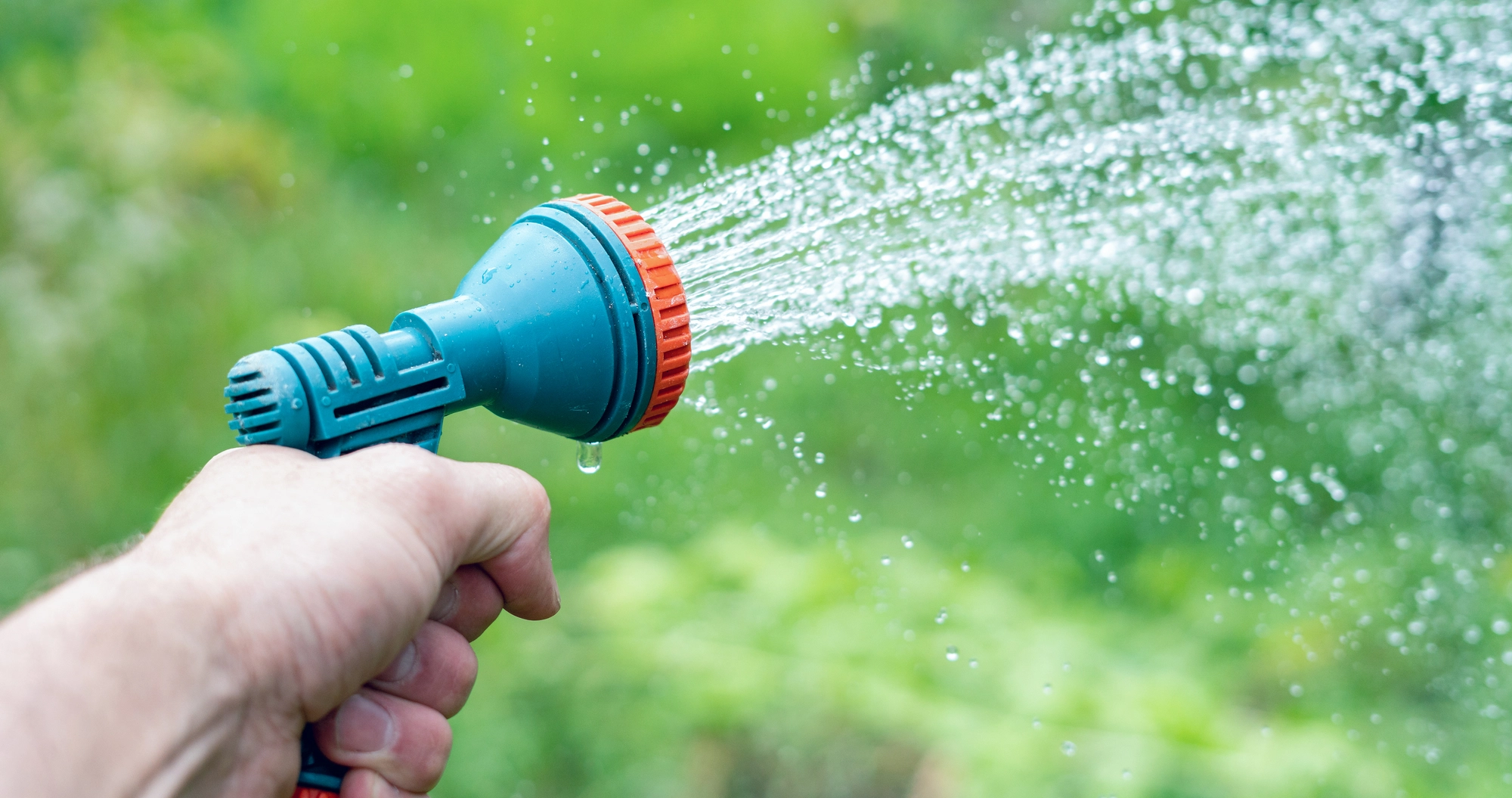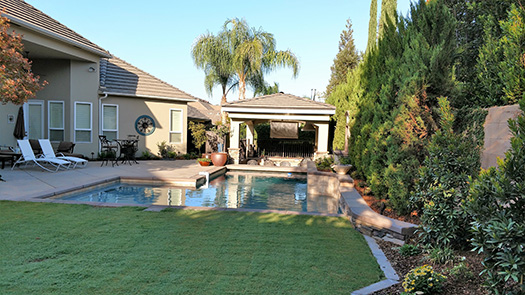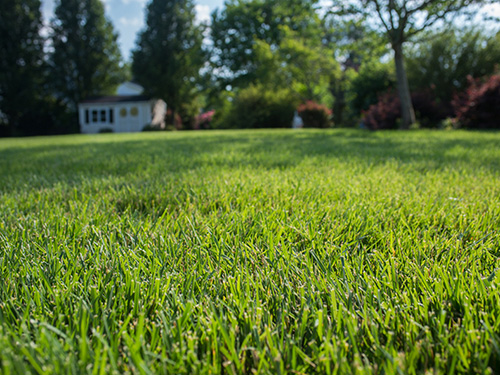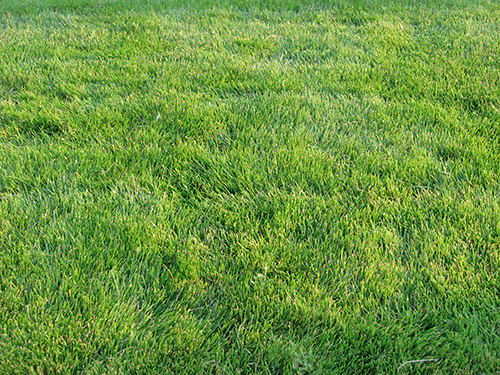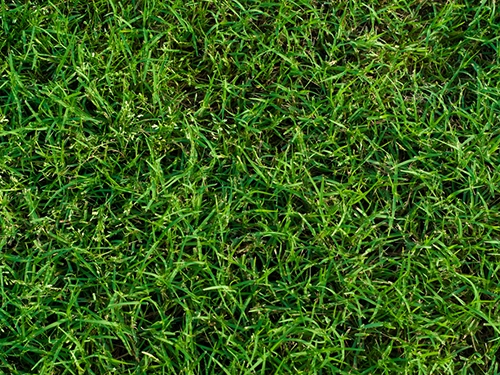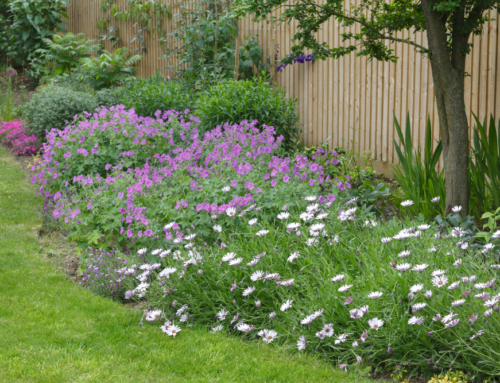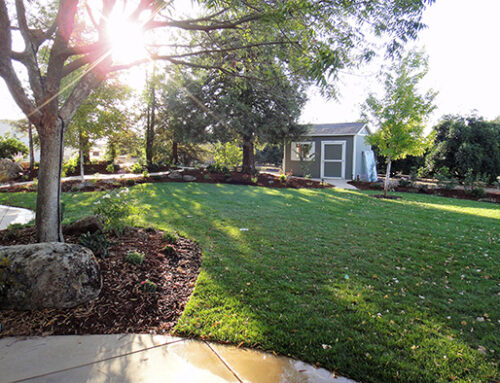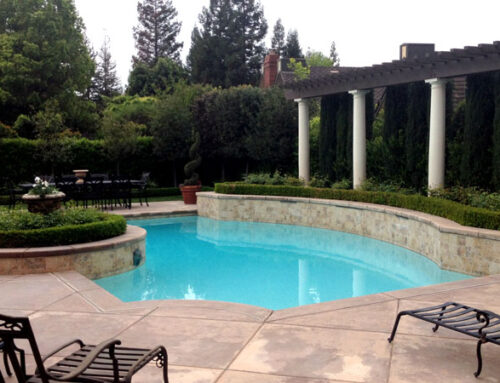Having a watering schedule is important for keeping a happy and healthy lawn. You want to make sure you’re not only watering at the right time but that you’re also giving your lawn enough water during the hot weather. We’re here to help you learn the best time to water grass as well as how much to water your lawn during the summer months.
Best Times for Lawn Care
Watering your lawn in the early morning, generally between 6 am to 10 am is the best time of day to water to ensure that your grass blades and soil soak in the water properly. Morning watering also allows your grass to stay hydrated during the hot summer days, and it decreases the heat stress your lawn may undergo.
If you can’t water in the morning, the next best time to water is at night between 6 pm and 8 pm. While this is the next best option, you want to still try to aim for earlier in the night so your lawn has enough time to dry. If they stay wet overnight, you run the risk of fungal growth and diseases.
How Much Should I Water My Lawn?
Your lawn needs will be different depending on which type of grass you have. Warm season grasses and drought-resistant grasses will need less water than other types of lawns. Typically, lawns need about an inch of water a week to make sure they are fully hydrated. The amount of water you give your lawn is important to keep track of. Overwatering or underwatering can cause your lawn’s health to decrease, or can even cause it to die.
How to Know If You’re Overwatering
It may be hard to judge the amount of time you are spending lawn watering. Even with a sprinkler system, sometimes you can still accidentally water your lawn too much. There are some telltale signs of overwatering that you should be aware of:
- Shallow root systems in the lawn
- Puddling or excess runoff
- Fungal growth
- Mold or root rot in your grass roots
Watch out for these signs of overwatering, and lessen the time you spend during your watering sessions to keep your grass healthy.
How to Know if You’re Underwatering
While some types of lawn don’t need to be watered as often, you could still experience signs that you are giving your lawn too little water. If you are seeing any of these signs of underwatering, you may want to increase your watering time:
- Sandy soils underneath your grass
- Grass blades will turn yellow then brown
- Footprints remain in your lawn longer than 30 minutes
- Evaporation is happening quickly and the lawn isn’t absorbing as much water
If you want to keep a green lawn, make sure it’s getting enough water. Sometimes even established lawns can become overwatered or underwatered, and it’s important to keep a close eye on them.
Which Types of Lawns Are Drought-Resistant?
Both cool season grasses and hot season grasses can be classified as drought-resistant since they typically get less water during these seasons. Drought-resistant grasses typically only require 3/4 to 1/4 inch of water per week, and can be a great option if you live in an area susceptible to extreme heat or cold. There are several types of drought-resistant grass that make great alternatives to regular lawns.
Fescue
Tall and red fescue grass is a type of grass that uses clay soil. It’s one of the most common types of grass in California and the Pacific Northwest since it can withstand heat and cold. It has low mowing needs and needs less fertilization. However, fescue grass needs deep water during the summer months to stay green in the winter months.
Zoysia
Zoysia is a low-maintenance grass that is great for hot weather. It has tough leaves and stems that also make it resistant to many conditions. Zoysia can heal itself when it’s walked on, and it thrives in full sun. During the winter, this type of grass will turn brown and remain dormant until the weather warms up again.
Bermuda
Bermuda grass is another great option for warm weather grass. While it’s cold-tolerant, it thrives in the summer months. Homeowners that live in warmer areas can expect green lawns all year round with Bermuda grass. However, this type of grass will go dormant when the temperature drops below 60 degrees Fahrenheit.
Need Help Choosing the Right Type of Grass For Your Yard?
Mike’s Evergreen is the right choice for help with drought-tolerant landscaping ideas because we are the Valley’s premier outdoor living experts. We work hard to understand your goals and provide quality results that will exceed your expectations. We understand that one of your biggest and most important investments is your home or business. Your objectives, lifestyle, personality, as well as the specific needs of your property, are carefully considered to reflect a landscape that will provide beauty, function, and value to your home or property.
Mike’s Evergreen offers a complete range of landscape services so we can make your custom drought-tolerant landscaping work well with the rest of your yard. Contact us to get started on creating your perfect yard.

